
This logo isn't an ad or affiliate link. It's an organization that shares in our mission, and empowered the authors to share their insights in Byte form.
Rumie vets Bytes for compliance with our
Standards.
The organization is responsible for the completeness and reliability of the content.
Learn more
about how Rumie works with partners.
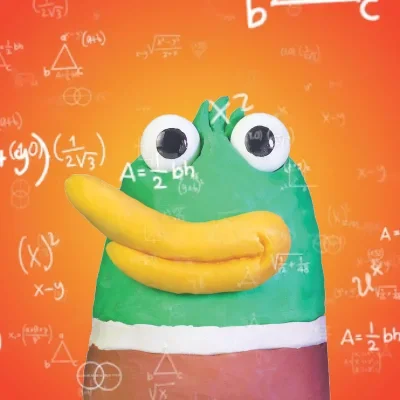
Do you ever look at a mixed number and wonder, "What does that even mean?" or, "How do I change that into an improper fraction?"
Look no further! Learn how to convert mixed numbers into improper fractions in 4 easy steps!
Review: Proper Fractions & Mixed Numbers
Proper Fraction
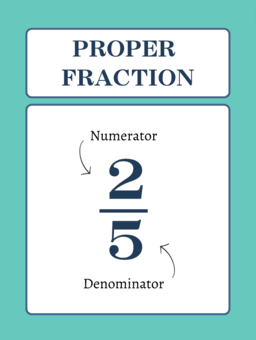
Denominator (5)
tells you how many equal parts make up one whole
Numerator (2)
tells you how many parts you have, out of the whole total
Mixed Number
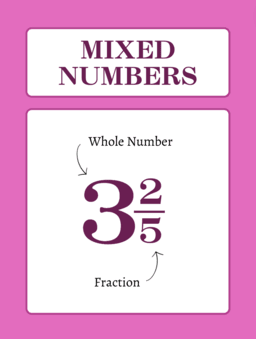
Mixed numbers are fractions that consist of 2 parts: the whole number and a fraction.
Whole Number (3)
tells you how many whole pieces there are in total
Fraction (2/5)
tells you how many parts of a whole there are
Improper Fraction
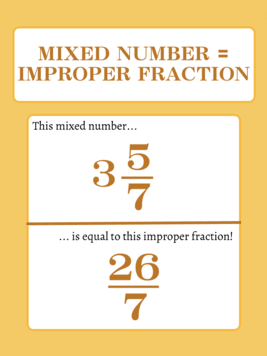
An improper fraction is another way to represent mixed numbers, where the numerator is greater than the denominator.
Imagine Pizzas
Let's imagine pizzas to help us understand mixed numbers.
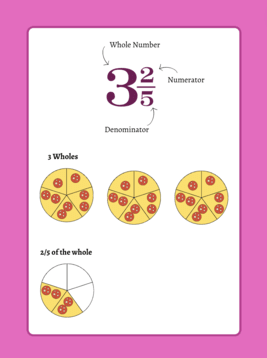
The whole number, 3, tells us that there are 3 whole pizzas, with 5 equal pieces.
The denominator, 5, tells us that the whole pizza is divided equally into 5 pieces.
The numerator, 2, tells us that there is one pizza that isn't quite whole. There are 2 slices of the 5 that remain.
How Do I Convert a Mixed Number into an Improper Fraction?
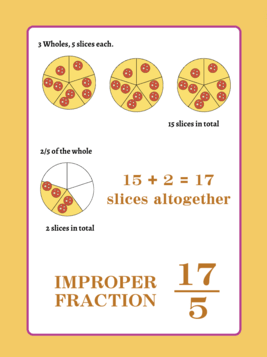
If...
there are 5 slices in a whole and,
there are 3 wholes...
That means the 3 wholes are made of 15 equal slices!
The fraction tells us...
we have 2 remaining slices
So, if we have 15 slices from the wholes, and 2 slices from the fraction...
we have 17 slices in total!
Write 17 as the numerator. The numerator tells us how many equal parts we have.
Keep the denominator as 5, because the denominator tells us how many equal parts there are in a whole. It doesn't change.
Quiz
If the mixed number is 5 wholes and one-fourths (5 1/4), what is the numerator in a mixed number?
1/4 tells us that there are 4 equal parts in a whole. If there are 5 wholes and 4 parts in each whole, that means there are 20 parts so far. Going back to the fraction, 1/4, the numerator tells us that we have 1 remaining part of the whole. Add 1 to the 20 parts, and we have 21 as the numerator!
Is There an Easier Way?
Why of course!
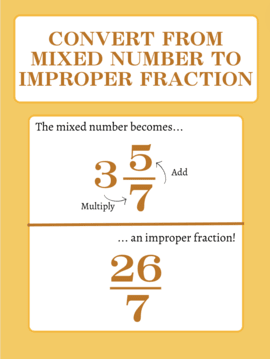
Multiply the whole number (3) by the denominator (7). This will tell us how many pieces make up the whole. 3 x 7 = 21
Add the numerator (5). This will tell us how many pieces there are altogether. 21 + 5 = 26
Write the sum as the new numerator of the improper fraction.
Keep the same denominator. 26/7
Quiz
Convert this mixed number into an improper fraction. 6 wholes and two-fifths (6 2/5).
Multiply the whole with the denominator (6 x 5 = 30). Add the numerator (30 + 2 = 32). Write 32 as the numerator. Keep the denominator the same.
Take Action

Was converting from a mixed number to an improper fraction easier than you thought? Sometimes, unfamiliar concepts can make you panic (I know I do), but with a little practice, you'll be a pro at converting fractions in no time!
This Byte has been authored by
Ivey Nee
Teacher
B.Sc, B.Ed